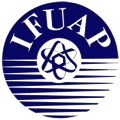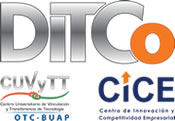Sociedad Mexicana de Ciencia y Tecnología
de Superficies y Materiales A.C.
VIII International Conference on
Surfaces, Materials and Vacuum
September 21 - 25, 2015 Puebla, Puebla
Advanced and Multifunctional Ceramics
Chairman:
Dr. Jesus Heiras Aguirre (CNYN-UNAM), heiras@cnyn.unam.mx
Materials capable of performing two or more primary functions, either simultaneously or sequentially are called multifunctional. Ceramics, on the other hand, are polycrystalline materials, metal or rare earth oxides, usually refractory, hard and brittle. These definitions are not intended to be precise but rather give a panoramic view of what is meant by multifunctional ceramics. The adjective advanced has been added to underline the fact that we are referring to ceramics that technologically go beyond the traditional pottery ceramic which, by the way, is recognized as an important precursor being one of the first materials manipulated by man to make pots, tools and other accessories. In fact, the word ceramic comes from the Greek "κεÏαμικός" that means pottery. Multifunctionality can be attained with hybrid materials, that is, a mixture or combination of two materials of different compositions or crystalline phases (alternating layers of thin films, for example) or in single phase materials that may behave multifunctional under applied electric and/or magnetic fields.
In real life, we are usually surrounded by objects and devices made of ceramic materials. At this moment, for instance you are surely surrounded by concrete walls, a ceramic, and by glass, also an amorphous ceramic; but also, when turning a knob to light up a stove or a cigarette lighter, when watching the image of a baby inside the mother’s womb, when using our computer or an intelligent card. To finish with the examples let us mention that the air bags of our car are triggered by the action of an acceleration ceramic sensor, and that infrared sensors are also ceramics. There is a great assortment of ceramic materials used in electronic devices such as actuators, sensors, switches, capacitors, oscillators and may also be used to make engines. Magnetic, piezoelectric, pyroelectric and ferroelectric ceramic materials are extensively studied in present days not only for their potential technological applications but also because understanding of the behavior and properties involves many phenomena that are in the frontier of knowledge such as “magnetoelectricityâ€, a property present in some multiferroic materials. The fascinating magnetic spiral and helical structures that give place to an electrical polarization in some ceramics (making them multifunctional) are a real challenge for the theoretical and experimental researcher in this field.
This symposium is a forum to present the results of theoretical and experimental research that may include synthesis routes, sintering procedures, analysis and characterization of the properties, as well as practical applications of the ceramic materials. Regarding the theory, we are interested in studies that allow a deep understanding of the involved phenomena, to design new materials, to predict their behavior and as a guide to improve on existing ones.












